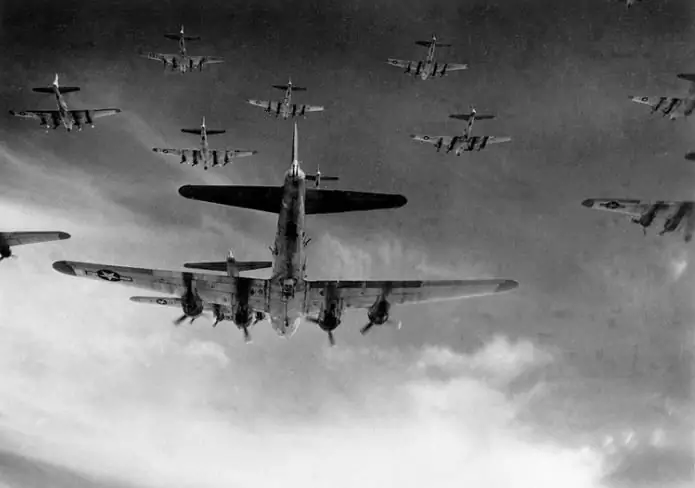- Author Henry Conors [email protected].
- Public 2024-02-12 02:43.
- Last modified 2025-01-23 09:07.
The history of the Great Patriotic War and the heroic deed of the Soviet people are inscribed in the tablets of memory for centuries. Many monuments on the territory of the Russian Federation and the former Soviet republics remind us of these terrible years and make us bow our heads in mourning for the fallen heroes. Piskarevsky Memorial Cemetery and the Green Belt of Glory in the Hero City of Leningrad, Brest Fortress in the Hero City of Brest, Malakhov Kurgan in the Hero City of Sevastopol, Catacombs in the Hero City of Odessa, Victory Park on Poklonnaya Hill in Moscow, Mamaev Kurgan in the Hero City Volgograd and others. But in Volgograd (Stalingrad) there is another memorial complex that also preserves the memory of the heroes of the war against the Nazis - the Alley of Heroes.
Memorial Alley

The Alley of Heroes in Volgograd (then still Stalingrad) was opened in 1955. It connects the central city embankment and the Square of the Fallen Fighters. On the granite memorial slab, from which the alley originates, there are images of two important awards of the USSR. They celebrated the military prowess and heroic deeds of Soviet soldiers and civilians.residents. This is the Order of Lenin and the Gold Star medal. The depicted awards are city insignia for their contribution to the fight against fascism.
The alley runs through the territory where three streets of the old town of Tsaritsyn used to be located: Preobrazhenskaya, Voznesenskaya and Moskovskaya. Walking paths follow. The alley is paved with colored paving stones, and a lighting system resembling a starry sky is placed above it. Along the Alley of Heroes rise memorial steles, which immortalize the exploits of 127 heroes of the defense of Stalingrad. The pedestrian zone is framed by pyramidal poplars.
Let's keep it in memory
Architects Alabyan, Levitan, Goldman became the authors of the idea of the Alley of Heroes. However, their project was not fully implemented. They did not break the Square of Glory and never installed a triumphal arch between the squares. In 2010, a nationwide discussion of the need to build this arch took place. The authorities of Volgograd promised to erect it for the 70th anniversary of the Battle of Stalingrad, but in a different place - at the intersection of Lenin Avenue and the street of the 13th Guards Division.
At the beginning of the alley, in addition to images of awards, there is another stone horizontal stele with words that remind everyone passing here about the valor and glory of the Stalingraders, whose names are carved on vertical steles. They read: "Heroes of the Soviet Union, awarded the title for their exploits in the Battle of Stalingrad."
Immortalized through the ages
In the list of 127 names we will find those that were well known to the people of the Soviet generation. Among the immortalized names of heroes on the Walk of Famethere are representatives of different peoples and nationalities.
The most famous, perhaps, is Ruben Ibarruri - a 22-year-old representative of the Spanish people, the son of the leader of the Communist Party of Spain, Dolores Ibarruri. Having emigrated to the USSR back in 1935, he bravely fought in the ranks of the Soviet army near Stalingrad, commanded a company of machine gunners. Near the railway station Kotluban, after the death of the battalion commander, he took command, raised the battalion to attack against enemy tanks. In battle, he was seriously wounded and soon died.

Feat - Glory
Among the names on the Alley of Heroes is the name of the Russian soldier Yakov Pavlov, who was part of the very company that was sent to capture and hold the "Stalingrad Fortress" - a four-story house on Penzenskaya Street, a hundred meters from the banks of the Volga. Preventing the enemy from crossing the river was an important strategic task facing the Soviet command. 25 soldiers, among whom was the Kalmyk Gorya Khokhlov, held an important height until the main forces arrived.

"Soviet Danko" - Ukrainian Mikhail Panikakha burned his lead tank during a tank attack of the enemy, and burned himself along with the tank.

Kazakh pilot Nurken Abdirov rammed a column of Nazi fuel trucks on a burning plane, repeating the feat of Nikolai Gastello.

Machine gunner Khanpasha Nuradilov, a Chechen by nationality, being seriously wounded, opposed three mortarsenemy batteries. In one battle, he destroyed 962 fascists.
And the teacher of Russian and Tatar languages Khafiz Fattyakhutdinov, who fought with a machine gun in his hands, destroyed 400 fascist soldiers and officers, leading a small detachment of Soviet fighters of 10 people. They faced an enemy force seventy times their own.

The exploits of many of those immortalized in steles on the Alley of Heroes have not yet been described. And this is the task of modern historians and local historians. In this way, we will be able to restore and preserve the memory of the still unknown moments of the military history of 1941-1945. and the heroes of their homeland.






